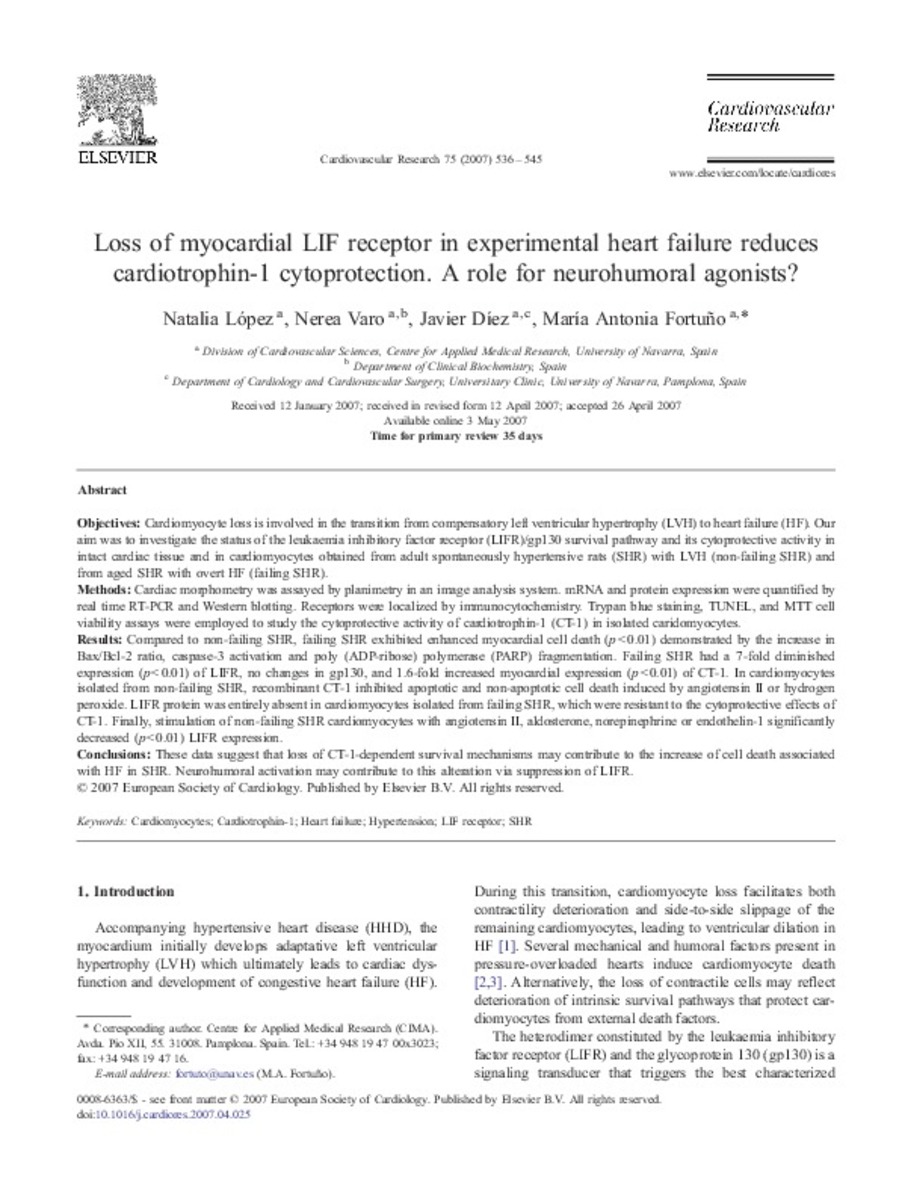Loss of myocardial LIF receptor in experimental heart failure reduces cardiotrophin-1 cytoprotection. A role for neurohumoral agonists?
Palabras clave :
Cardiomyocytes
Cardiotrophin-1
Heart failure
Hypertension
LIF receptor
SHR
Fecha de publicación :
2007
Editorial :
Oxford University Press
Cita:
Lopez N, Varo N, Diez J, Fortuno MA. Loss of myocardial LIF receptor in experimental heart failure reduces cardiotrophin-1 cytoprotection. A role for neurohumoral agonists? Cardiovasc Res 2007 Aug 1;75(3):536-545.
Aparece en las colecciones:
Estadísticas e impacto
0 citas en

0 citas en

Los ítems de Dadun están protegidos por copyright, con todos los derechos reservados, a menos que se indique lo contrario.











